
“Greater love hath no man than this, that a man lay down his life for his friends.”—John 15:13
Remembering the Titanic, April 14, 1912
 ne hundred twelve years ago, the luxury ocean liner RMS Titanic struck an iceberg and began to sink. In the three short hours before she was submerged, her enduring legacy of heroism and hubris became cemented in history. ne hundred twelve years ago, the luxury ocean liner RMS Titanic struck an iceberg and began to sink. In the three short hours before she was submerged, her enduring legacy of heroism and hubris became cemented in history.
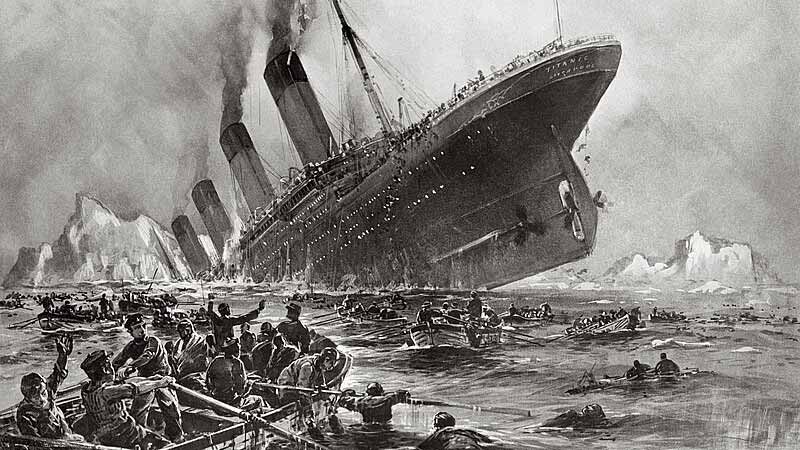
A contemporary painting of the sinking of the Titanic, by Willy Stöwer
On a record-making voyage from England to New York, RMS Titanic carried aboard her some of the most notable figures of the early 20th century, a substantial middle class and also, hundreds of immigrants. When the rescue ship, Carpathia, arrived the next morning at the scene of the wreck and began loading survivors, it was found that over 1,500 souls, including the captain, had gone down into the frigid Atlantic. The sinking of the RMS Titanic remains the deadliest maritime disaster in peacetime.

On April 17, 1912 the New York Times published an early list of survivors while further information continued to trickle in
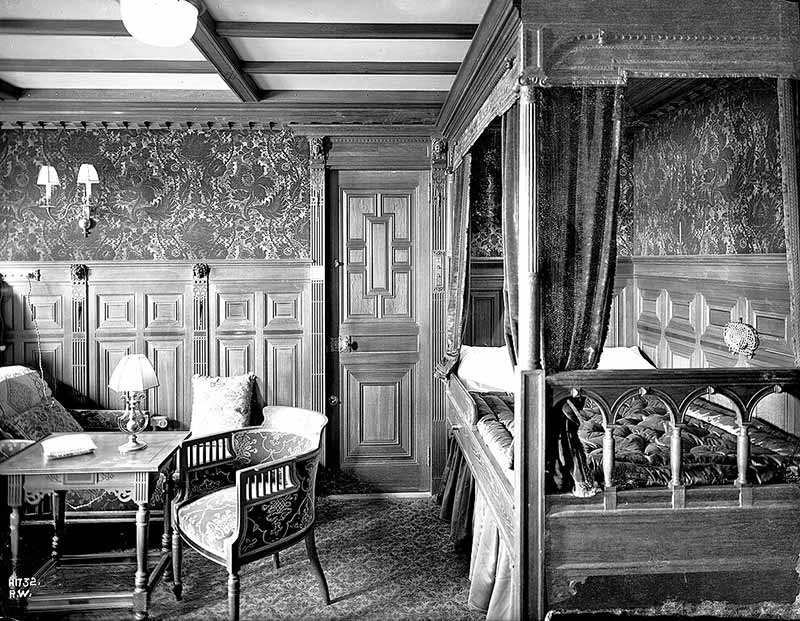
Stateroom B 59 aboard the Titanic, displaying the opulence and luxury which was so broadly advertised
|
“The history of the RMS Titanic of the White Star Line, is one of the most tragically short it is possible to conceive. The world had waited expectantly for its launching and again for its sailing; had read accounts of its tremendous size and its unexampled completeness and luxury; had felt it a matter of the greatest satisfaction that such a comfortable and above all such a safe boat had been designed and built—the “unsinkable lifeboat”—and then in a moment to hear that it had gone to the bottom as if it had been the veriest tramp steamer of a few hundred tons; and with it fifteen hundred passengers, some of them known all the world over! The improbability of such a thing ever happening was what staggered humanity.”—Lawrence Beesley, Titanic survivor
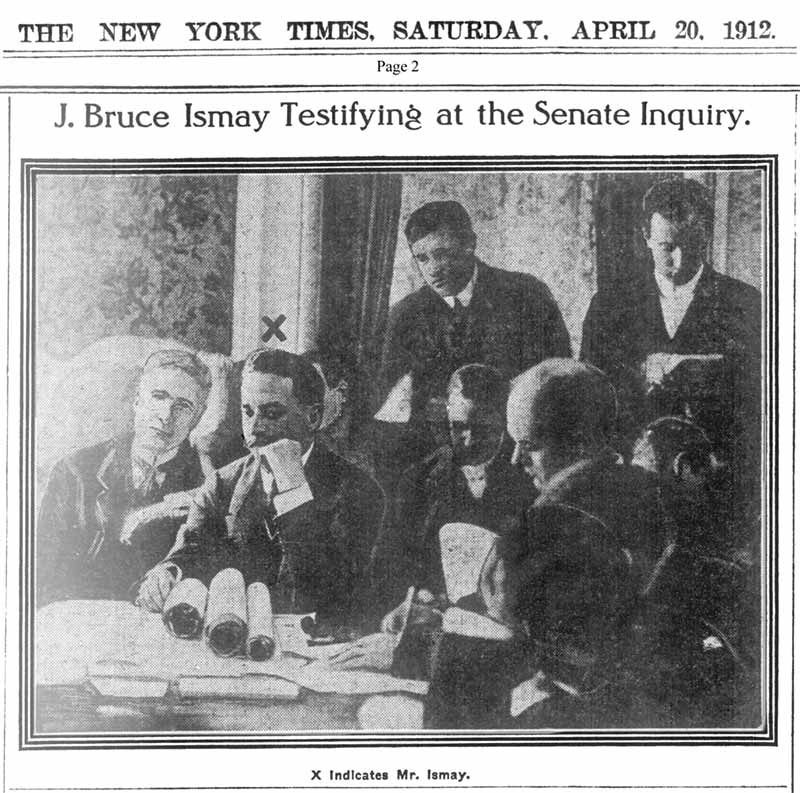
J. Bruce Ismay (marked with an X) shown testifying at a U.S. Senate Inquiry into sinking of the RMS Titanic
The inquiry of that following morning began the unveiling of many alarming and unpleasant truths. Subsequently, testimonies emerged of one of history’s most gallant last stands. In a century dawning with suffragettes, booming industrialism, communism and looming world war—all of which had new ideas regarding chivalry’s place in the world—the example of the Titanic would prove the old law of the sea would once again have its day.
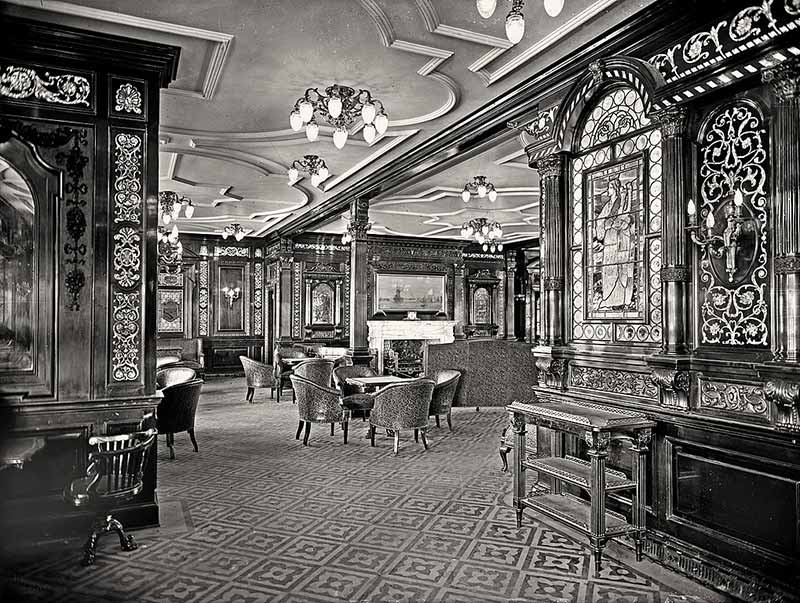
A recreation of Titanic’s smoking room
“…There arose before us from the decks below a mass of humanity several lines deep converging on the Boat Deck facing us and completely blocking our passage to the stern. There were women in the crowd as well as men and these seemed to be steerage passengers who had just come up from the decks below. Even among these people there was no hysterical cry, no evidence of panic. Oh the agony of it.”
—Colonel Archibald Gracie, Titanic survivor
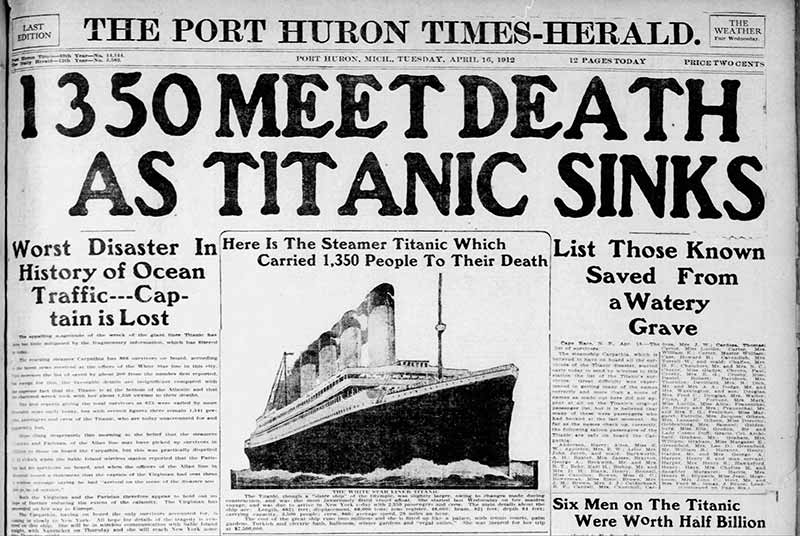
The Port Huron Times reporting on the loss of life aboard the Titanic
|
Join us next month in Tennessee as we visit the world-class Titanic Musem in Pigeon Forge during our Appalachian Spring Tour, May 1-2. |
|
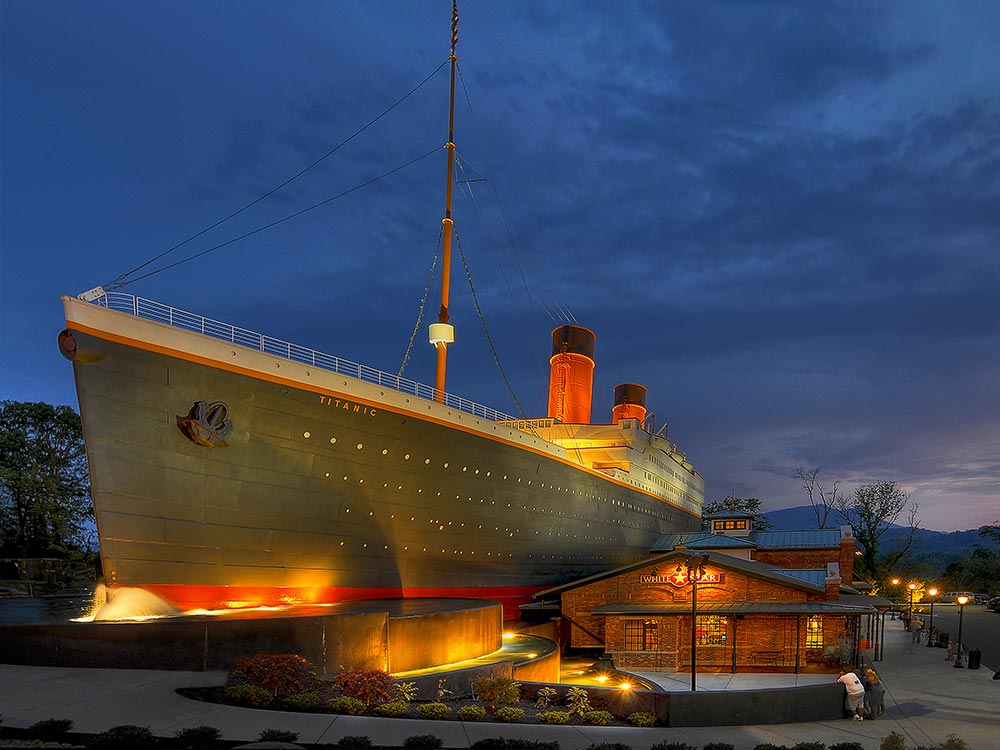 |
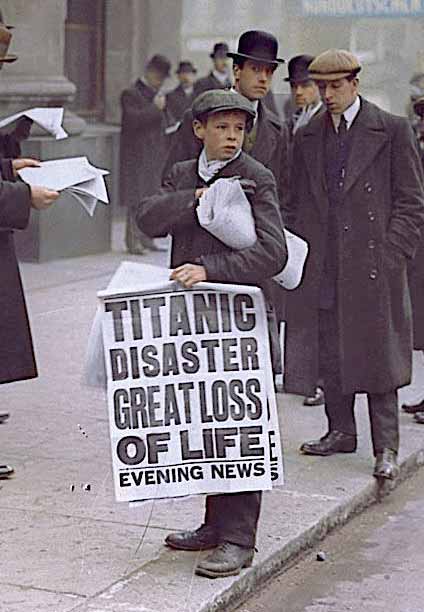
Ned Parfett, best known as the “Titanic paperboy”, holding a large newspaper banner advert about the sinking, standing outside the White Star Line offices in London,
April 16, 1912
|
A long list of dead published in the New York Times held the names of such millionaire magnates as John Jacob Astor, Benjamin Guggenheim, George Dennick Wick, Isidor Strauss and his wife Ida—all of whom willingly gave up their seats in the limited lifeboats at the call of “women and children first”. Presidential aide and distinguished officer, Archibald Butts, perished while making the same sacrifice; Thomas Andrews, the ship’s architect, as well. Meanwhile Titanic’s mammoth crew continued at their dangerous posts until the last moment, laboring to buy time and keep the ship afloat for rescue at the cost of all chance for personal escape.
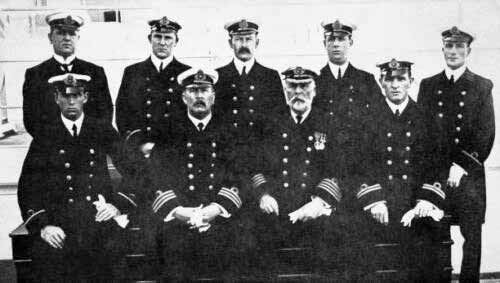
Captain Smith (seated, just right of center) and other officers of the Titanic
During moments of mass tragedy the world narrows, and isolated aboard a sinking marvel in the middle of the Atlantic, an unfolding narrative of contrasts played out, one of self-preservation warring with the Christian ethic of sacrifice.
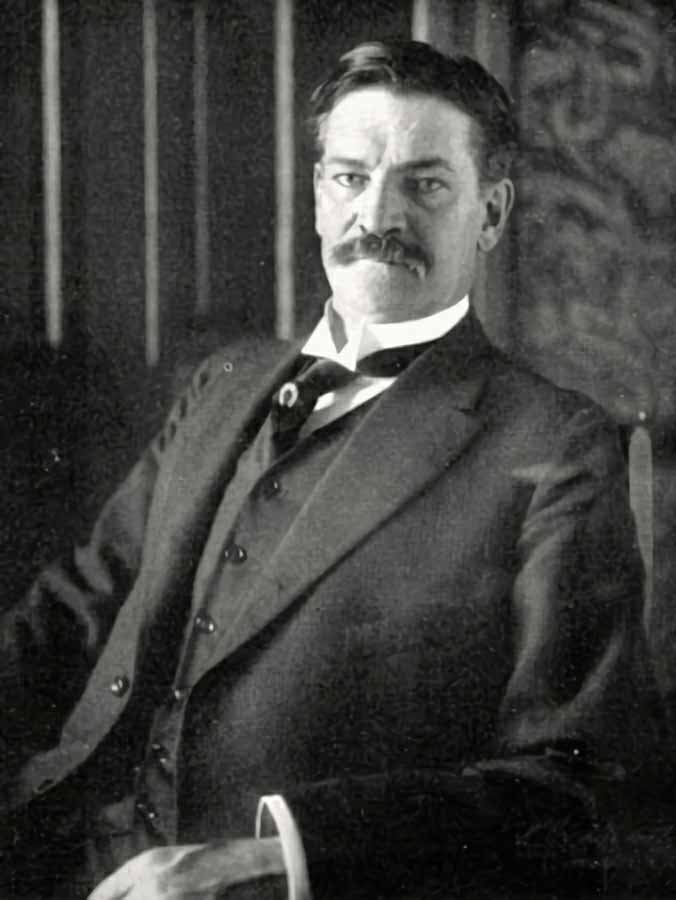
Archibald Gracie IV (1858-1912) initially survived the sinking and wrote extensively of his experience, but never fully recovered and died a mere 8 months later due to complications from the ordeal
|
“What impressed me at the time that my eyes beheld the horrible scene was a thin light-gray smoky vapor that hung like a pall a few feet above the broad expanse of sea that was covered with a mass of tangled wreckage. That it was a tangible vapor, and not a product of my imagination, I feel well-assured. It may have been caused by smoke or steam rising to the surface around the area where the ship had sunk. At any rate it produced a supernatural effect, and the pictures I had seen by Dante and the description I had read in my Virgil of the infernal regions of Charon, and the River Leth, were then uppermost in my thoughts. Add to this, within the area described, which was as far as my eyes could reach, there arose to the sky the most horrible sounds ever heard by mortal man except by those of us who survived this terrible tragedy. The agonizing cries of death from over a thousand throats, the wails and groans of the suffering, the shrieks of the terror-stricken and the awful gaspings for breath of those in the last throes of drowning, none of us will ever forget to our dying day.”
—Colonel Archibald Gracie, Titanic survivor
Faced with prospects of unimaginable horror, the men of the Titanic, and even some women, chose to lay down their lives for the weak that night. In the end, duty and gallantry, even at appalling cost, remained the victor. The implication of that still grips us today.
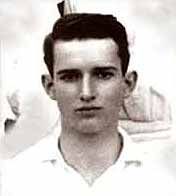
John Borland “Jack” Thayer III (1894-1945) was a 17-year-old first-class passenger traveling with his parents on the Titanic at the time of the sinking. He survived by jumping overboard and climbing onto an overturned lifeboat where he spent the remainder of the night before being rescued.
|
“There was peace and the world had an even tenor to its way. Nothing was revealed in the morning the trend of which was not known the night before. It seems to me that the disaster about to occur was the event that not only made the world rub its eyes and awake but woke it with a start. To my mind the world of today awoke April 15th, 1912.”
—Jack B. Thayer, Titanic survivor

Image Credits:
1 Sinking (wikipedia.org)
2 NYT Front Page (wikipedia.org)
3 Titanic Stateroom (wikipedia.org)
4 Senate Inquiry (wikipedia.org)
5 Titanic Smoking Room (wikipedia.org)
6 Port Huron Times (wikipedia.org)
7 Paperboy (wikipedia.org)
8 Titanic officers (wikipedia.org)
9 Archibald Gracie (wikipedia.org)
10 Jack Thayer (wikipedia.org)
|







